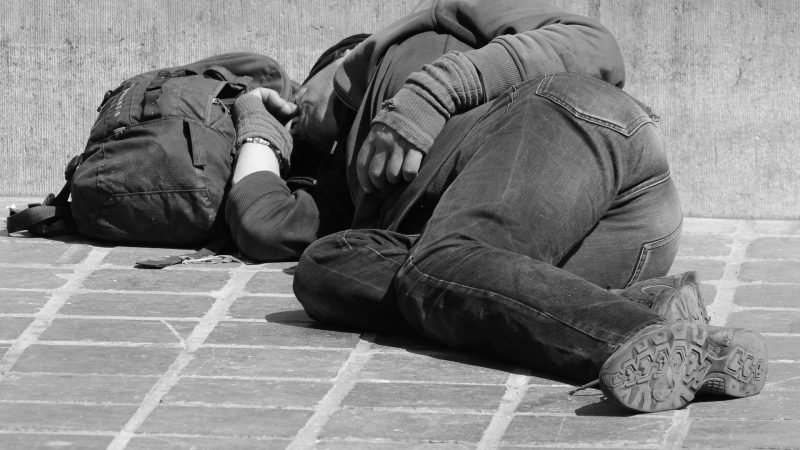By Tonya Alanez, Sun Sentinel
Derrick Jackson left behind a home, a girlfriend and a $14-an-hour job in , Ohio, in hopes of landing a better paying maintenance job at Florida Power & Light, where a relative works.
The job never materialized and Jackson found himself selling newspapers for the homeless shelter that took him in. He is putting away $100 a week in hopes of regaining his footing.
“It only takes one catastrophe to put you here,” said Jackson, 41, who left his job of seven years about a month ago and has never been without a roof of his own over his head. “You don’t know that after the next hurricane or storm, it could be you selling these newspapers.”
Northerners lured by promised jobs make up the newest type of client seeking help at Sean Cononie’s Homeless Voice shelter on Federal Highway, one of the only ones in Broward that takes in out-of-towners.They are also showing up at Palm Beach County shelters, said Claudia Tuck, division director of the county’s Human and Veteran Services.
“We’re loaded, and it’s all new faces,” said Cononie, who has been working with the homeless for nearly 15 years. “A lot of them are coming in being promised employment. It doesn’t pan out and they’re homeless.”
Because they come and go, Cononie says he can’t say exactly how many such clients he has housed in the last year, but said he has seen two or three in any given week. Despite a 9.6 percent unemployment rate here, they desperately wanted to believe they would get work, he said.
“There is no typical homeless individual anymore,” said Tom Pierce, director of the Florida Office on Homelessness in. “It’s crossing all segments of our society. People who used to be middle class and working who never saw homelessness, it could be hitting them tomorrow.”
Case in point, in 2010, more than 43 percent of the estimated 57,643 homeless in Florida were experiencing it for the first time, state figures show.
Homeless shelters nationwide are now filled to capacity year-round, whereas they used to fill up solely during winter months, said Michael Stoops, of the National Coalition for the Homeless in Washington, D.C. And cuts in funding, private and public, have led to an uptick in shuttered shelters.
“The situation is dire,” said Stoops. “It’s likely to get worse before it gets better. People sound and seem to be a lot more desperate than they have been in the past.”
South Florida saw its highest homeless numbers in 2007, with an estimated 11,376 in Broward, -Dade and counties combined. The combined 2010 estimate stood at 10,133.
The causes range from job losses to foreclosures,mental health issues to disabilities as well as alcohol and drug addiction.
Cononie said his clientele usually consists of the most chronic homeless, those kicked out of traditional shelters and who hospitals don’t want. His controversial style is equal parts tough love, confrontation, conflict, reasoning and affection. He deploys dozens to sell The Homeless Voice newspaper at South Florida intersections and divvies their take 40/60.
“I don’t ever believe a person should have a free bed,” Cononie said, although he frequently makes exceptions. “Capitalism promotes them to do better.”
Cononie runs his shelter and seven smaller transitional housing facilities solely on donations and the earnings brought in by selling the newspapers. Even he is feeling the economic pinch. After holding steady for the last few years, cash donations in the last week fell by about $1,500 and newspaper and check donations took a combined hit of about $3,000 in the last two weeks, Cononie said.
Jackson, turned away by county-run shelters because he was not a Broward resident, said the Hollywood shelter has been a godsend. But he doesn’t want to grow too comfortable there.
“I fear becoming dependent on somebody else for my existence,” he said. “I’m not that person. I don’t want to be that person. I want to stay sharp, and stay on my toes, and stay hungry, so I could move on.”


